Racing Line Basics
These notes are a quick summary on what we covered during the sessions at the track. You can review the notes to see what you may have forgotten, and then take a quick quiz to see how much you remember.
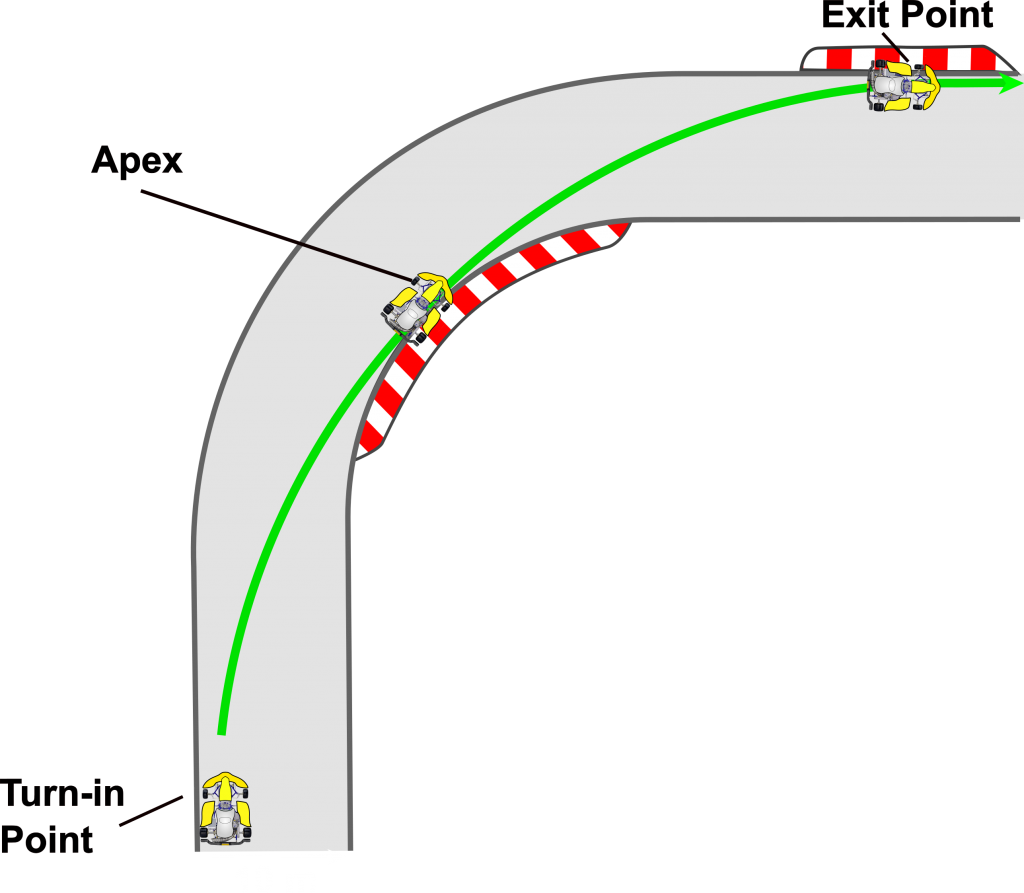
- The line is the path the kart takes around the track.
- The goal is to find and be on the fastest line – the Racing Line.
- Outside – Inside – Outside – the basic guide to follow for most corners that have a straight section before & after them.
- The line can change a lot based the type of corner and what’s before & after it.
- The line can also change based on how fast your kart is (engine power), and how much grip there is.
Why is the outside-inside-outside line usually the fastest?
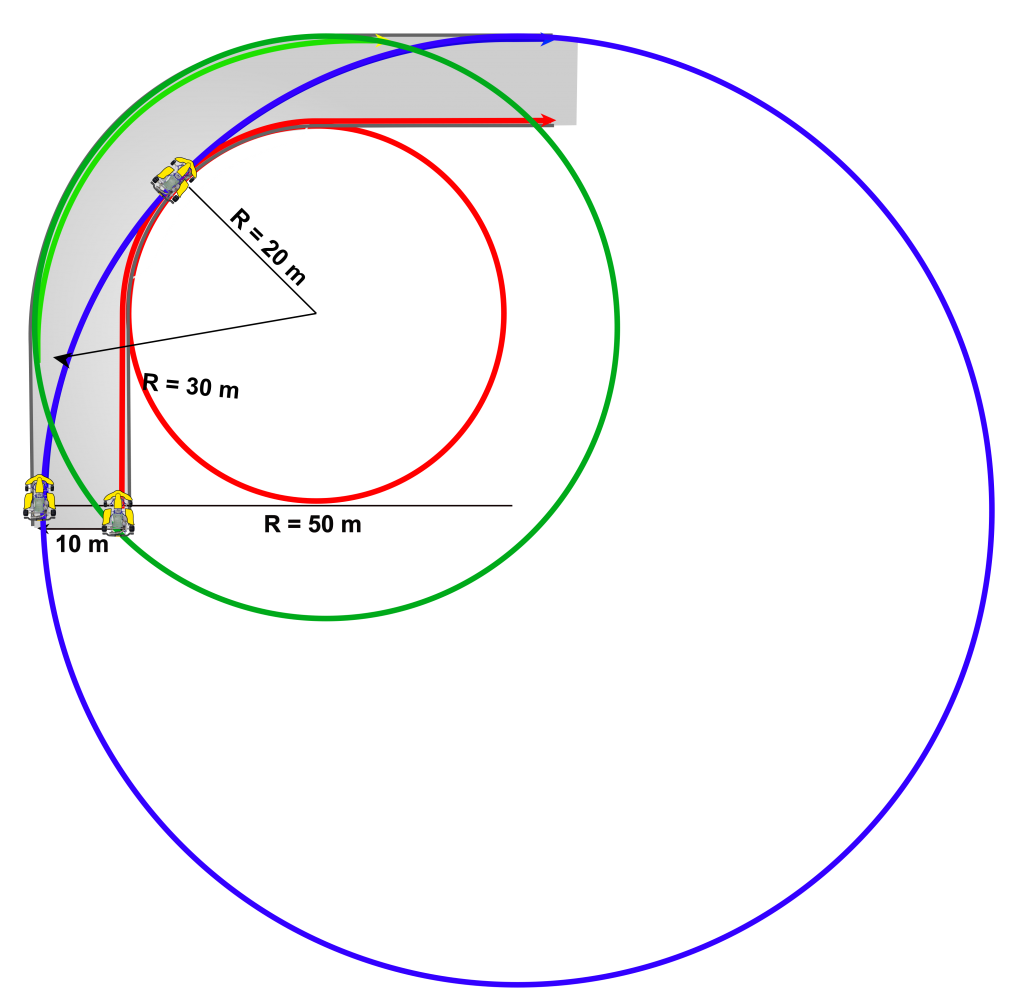
The outside-inside-outside line makes the line you take as wide as possible. It is the largest radius line possible. The blue example line above follows the largest possible geometric line – the largest radius possible all the way from turn-in point, to the exit point.
Red line: Shortest distance (slightly shorter than blue), but much slower speed. In the example above, about 50kph is possible.
Green line: Longest distance of the three, and only slightly faster speed than the red line is possible at 60kph.
Blue line: Distance covered is a bit longer than the red line, but the speed possible in this example corner is over 80kph! That’s a huge difference in speed, and more than makes up for the time lost in distance vs the red line.
Is the blue line the absolute fastest possible line? The perfect geometric line usually isn’t. You most likely want to turn-in a little later than the blue line above, so that you have a slightly tighter radius line in the entry phase, and wide line on the exit – but these are small details vs. the basics of outside-inside-outside.
Racing Line: Fast vs. Slow Corners
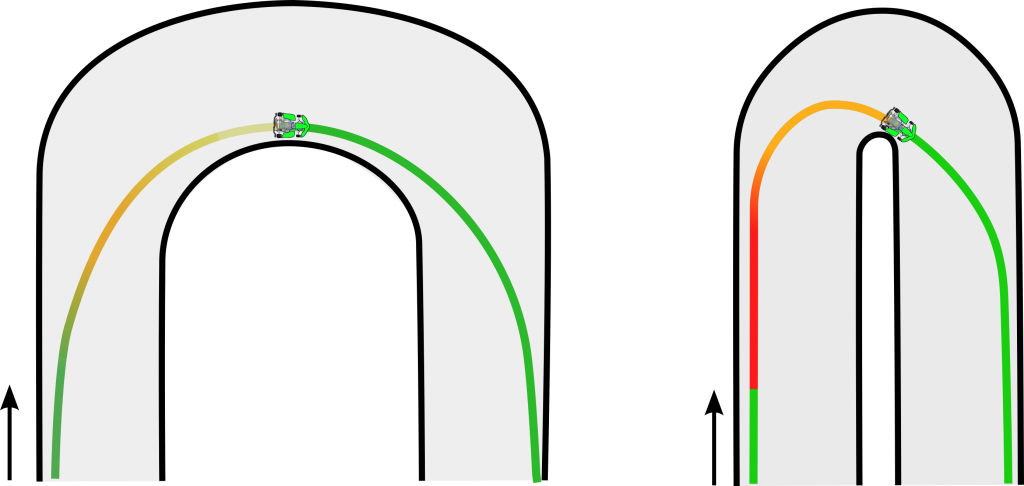
We mentioned above that the widest line might not always be the absolute best. The general rule to follow is that for a fast corner, you will drive quite close to the widest possible line through the entire corner, but as the corner gets tighter, things change.
For slower corners, it’s usually better to turn-in later. This is because you prioritize exit speed by doing more of the kart rotation (turning) in the first half of the corner when you’re slowing down. You will be able to accelerate earlier, making your exit speed faster.
To summarize: The slower the corner, the later the turn-in, and the later the apex.
Cornering Terms & Phases
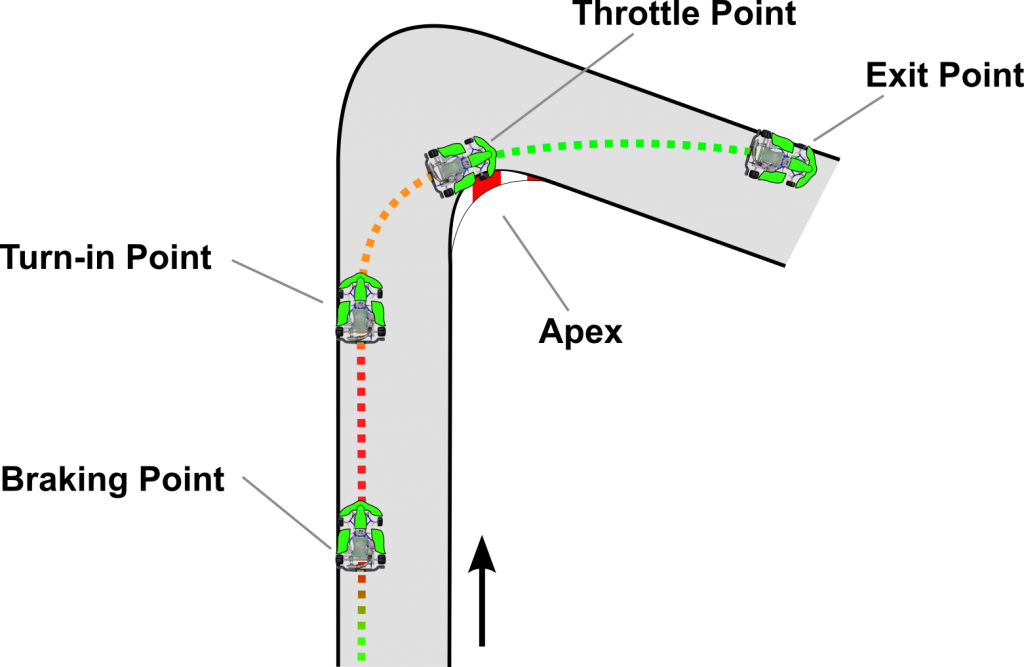
Some cornering terms that every driver should know. These are important so that you and your coach/mechanic/parent will be speaking the same language and be able to understand each other.
Braking point: The point at which you first get on the brakes.
Turn-in point: Where you first start turning-in to the corner.
Apex: The part of the track where you get closest to the inside of the corner. The exact location of it can change a bit based on the type of corner, the speed of the kart, or even your driving style.
Throttle point: The point at which you get on the throttle (that’s the pedal on the right – it makes you go faster 😉 ).
Exit point: the part of the exit of the corner where you get close to the outside edge of the track. This is also called the track-out point.
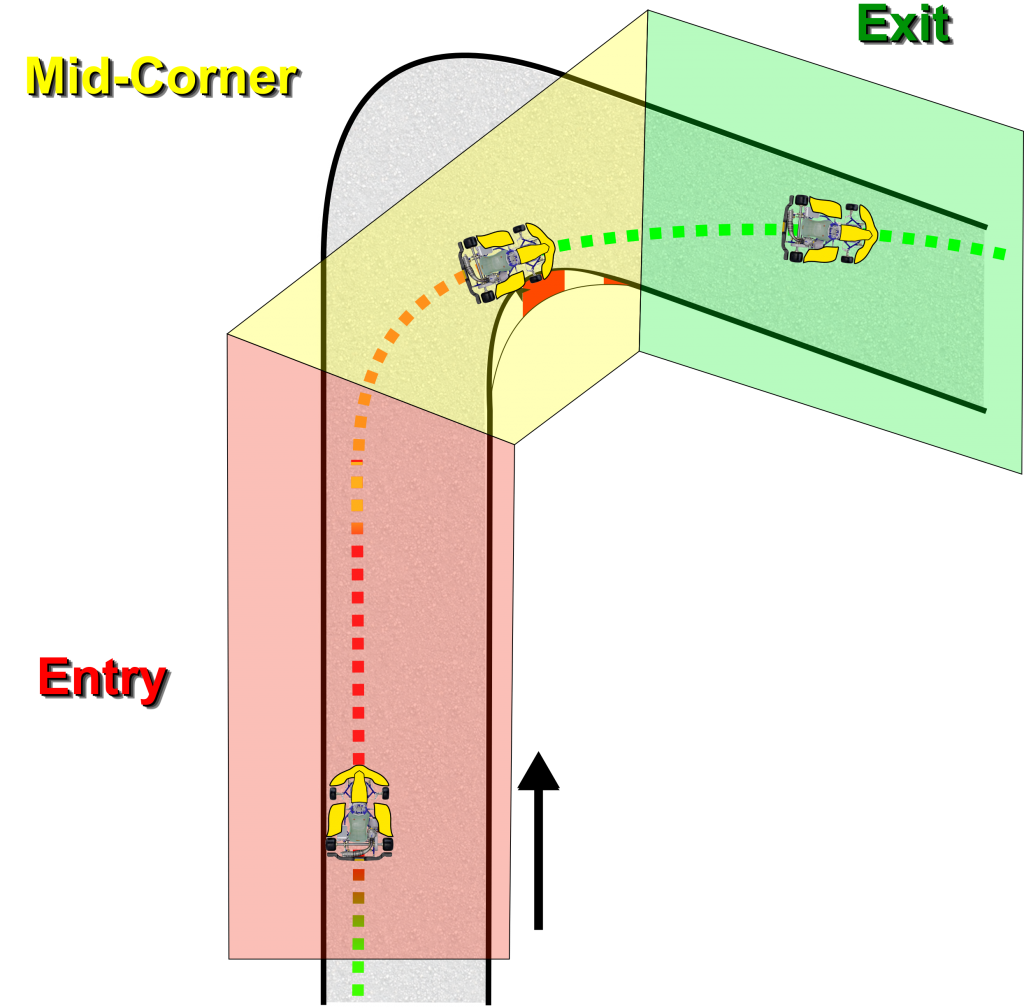
The phases of the corner in simple terms can be divided into Entry, Mid-Corner, and Exit. These are usually used to talk about your driving technique in different parts of the corner, of to talk about how the kart is handling. They can be further divided into more phases such as early-entry, late-entry, initial throttle phase, or late exit for example.
Cornering Technique – Basics
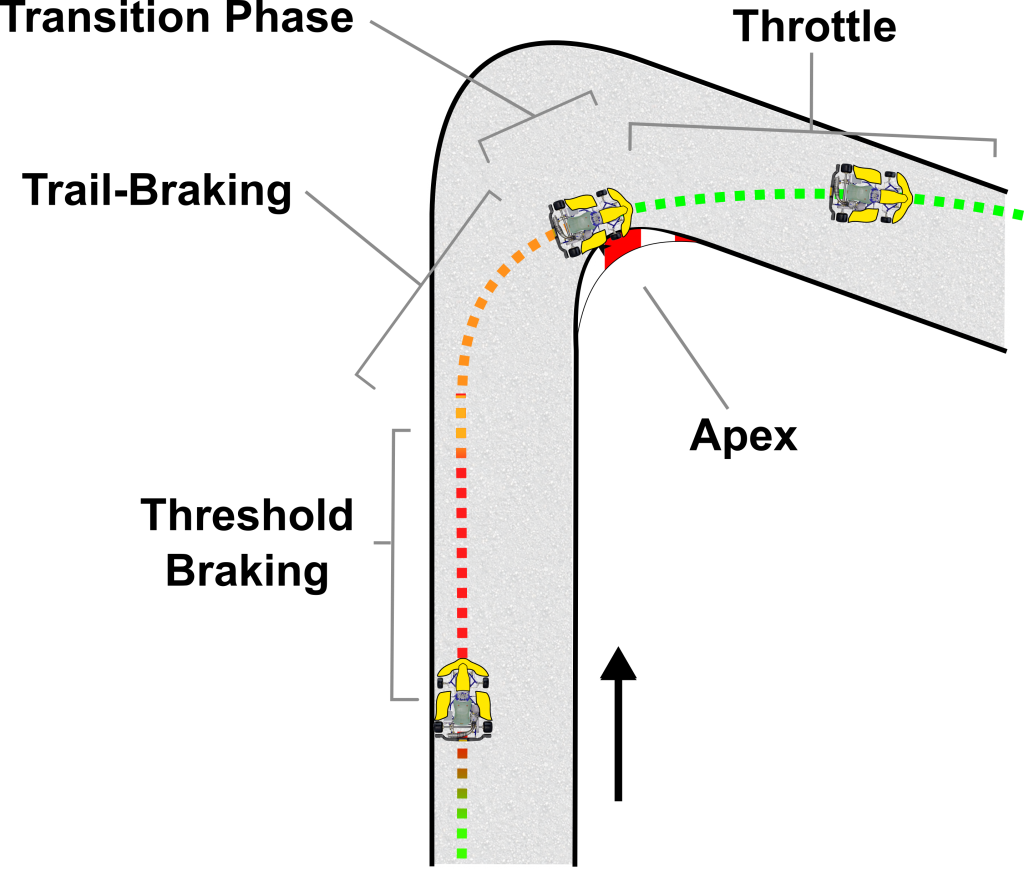
Here’s a typical corner which we will use to describe cornering technique. You’ll notice several new terms here as well.
On the straight before the corner you should be at full throttle.
Braking Point and Threshold Braking
Once you reach your braking point, you should very quickly change from full throttle, to hard braking. Threshold braking simply means braking at of very close to the limit of what the tires can handle. You might hear the tires screeching a tiny bit – that’s a good sign you’re at the limit. If you brake too hard, then the tires lock-up, and you might struggle to control the kart properly.
Trail Braking
Once you reach your turn-in point, you should start to gradually ease off the brake pedal. Imagine a string being tied from your steering wheel to the brake pedal – as you steer more into the corner, the brake pedal should be releasing more, until it’s completely off.
How quickly or slowly you let go of the brake has a big impact on how the kart enters the corner. The correct technique also changes based on several factors such as the type of corner, and the kart setup.
Transition Phase
This is the part of the corner where you transition away from braking, and start getting back on the throttle. The exact timing varies of pedal inputs vary. In some corners you might have a coasting phase – a time when you don’t have any brake or throttle pedal applied. In other corners the time from when you completely let go of the brake, to when you start to get back on the throttle is very short.
What should you do with your steering when you start getting on the throttle? As a general rule, when the throttle goes on, the steering wheel should start straightening. You might have a coach tell you to “straighten the wheel earlier” or “unwind the wheel on the exit” or “let the kart flow out on the exit” – these all refer to putting less steering input during the mid-corner and corner exit phases.
Back-to-Back or Linked Corners
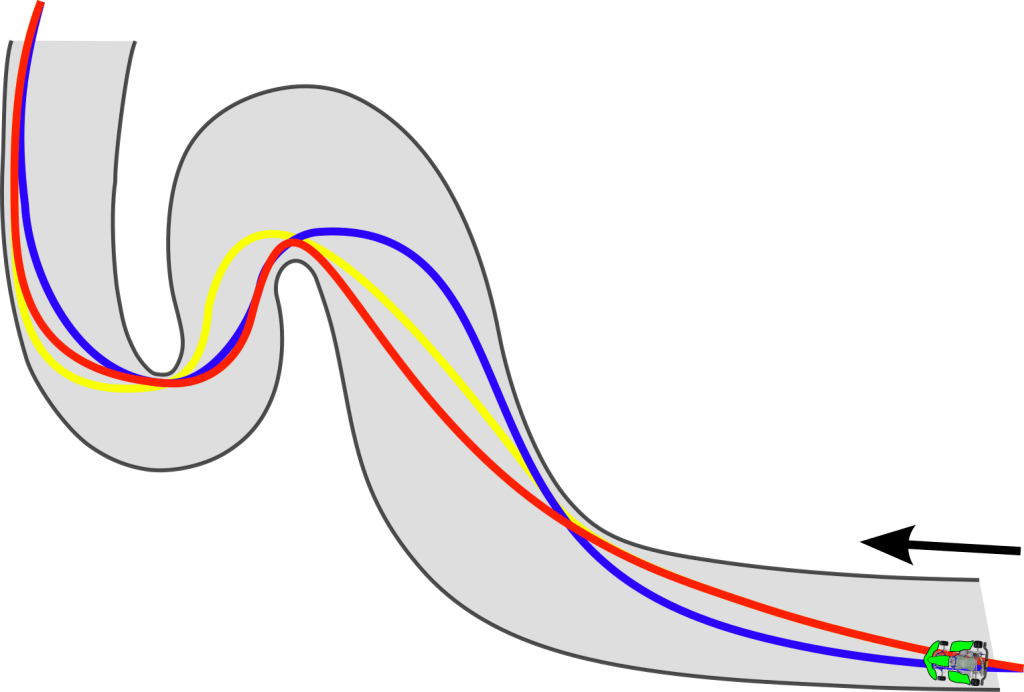
Things get a bit more complicated when there are back-to-back corners, rather than a more simple corner with a straight before and after it.
Which line do you think is best here?
The basic rule with a sequence of corners is that you give priority to the corner before the straight. That means you should try to take a line that allows a quick exit from the last of the corners before a straight.
The yellow line in this example clearly does not follow that rule. It might be quite fast in the first of the three corner, and even ok in the 2nd corner, but do you think it has any chance of being fast in the 3rd corner, and especially at the exit of it?
The red line is probably fastest to get to the left-hand corner apex, but to keep such a tight line in that corner, the driver would have to slow down the kart until it was almost stopped!
That makes the blue line the very likely winner here. Have a think about other corners on the track, and what might be some common mistakes in those? Download the Karting Arena Jurong layout.
